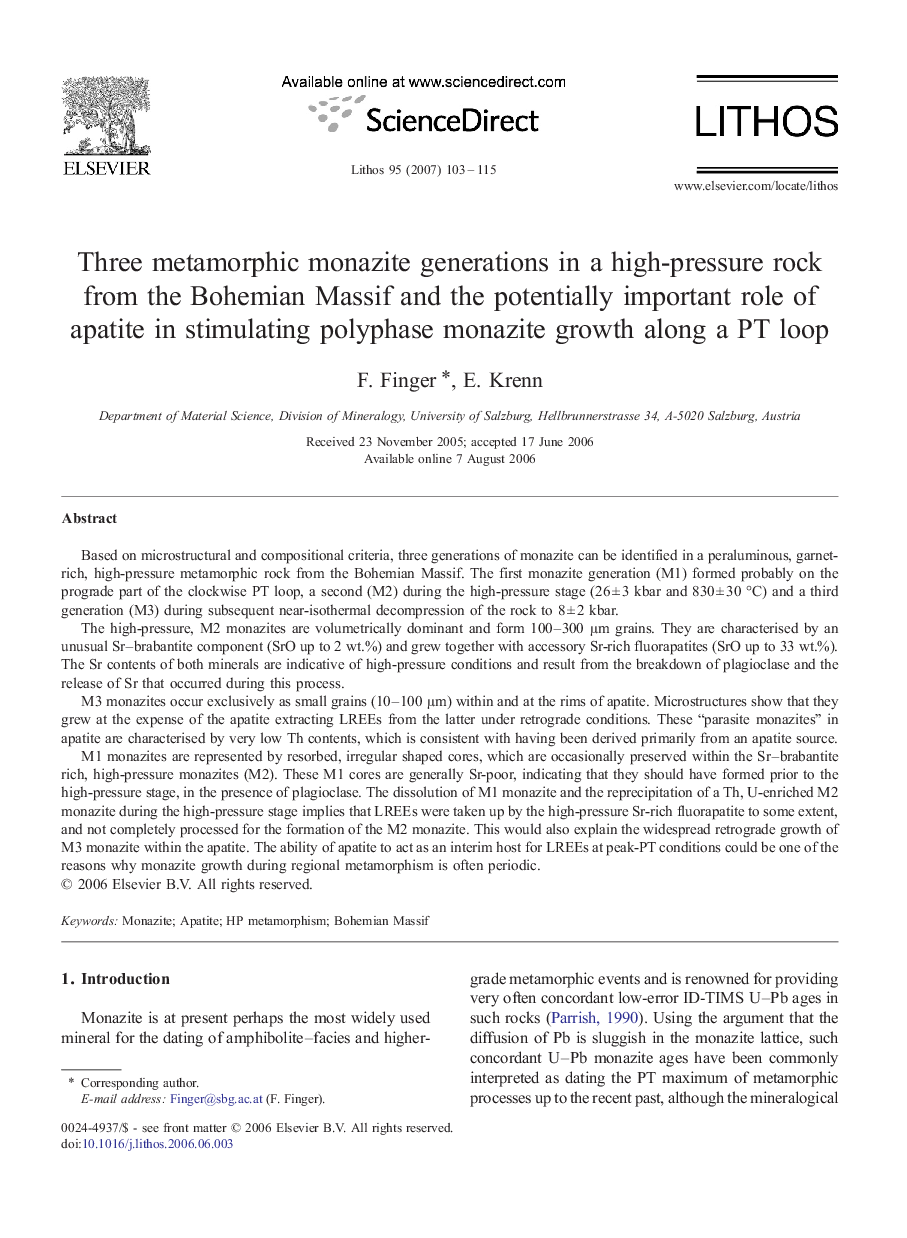| Article ID | Journal | Published Year | Pages | File Type |
|---|---|---|---|---|
| 4717798 | Lithos | 2007 | 13 Pages |
Based on microstructural and compositional criteria, three generations of monazite can be identified in a peraluminous, garnet-rich, high-pressure metamorphic rock from the Bohemian Massif. The first monazite generation (M1) formed probably on the prograde part of the clockwise PT loop, a second (M2) during the high-pressure stage (26 ± 3 kbar and 830 ± 30 °C) and a third generation (M3) during subsequent near-isothermal decompression of the rock to 8 ± 2 kbar.The high-pressure, M2 monazites are volumetrically dominant and form 100–300 μm grains. They are characterised by an unusual Sr–brabantite component (SrO up to 2 wt.%) and grew together with accessory Sr-rich fluorapatites (SrO up to 33 wt.%). The Sr contents of both minerals are indicative of high-pressure conditions and result from the breakdown of plagioclase and the release of Sr that occurred during this process.M3 monazites occur exclusively as small grains (10–100 μm) within and at the rims of apatite. Microstructures show that they grew at the expense of the apatite extracting LREEs from the latter under retrograde conditions. These “parasite monazites” in apatite are characterised by very low Th contents, which is consistent with having been derived primarily from an apatite source.M1 monazites are represented by resorbed, irregular shaped cores, which are occasionally preserved within the Sr–brabantite rich, high-pressure monazites (M2). These M1 cores are generally Sr-poor, indicating that they should have formed prior to the high-pressure stage, in the presence of plagioclase. The dissolution of M1 monazite and the reprecipitation of a Th, U-enriched M2 monazite during the high-pressure stage implies that LREEs were taken up by the high-pressure Sr-rich fluorapatite to some extent, and not completely processed for the formation of the M2 monazite. This would also explain the widespread retrograde growth of M3 monazite within the apatite. The ability of apatite to act as an interim host for LREEs at peak-PT conditions could be one of the reasons why monazite growth during regional metamorphism is often periodic.
